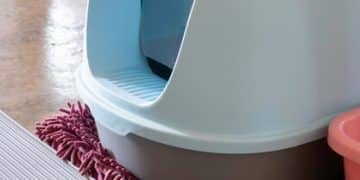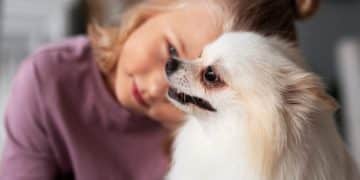FLUTD in Cats: Prevention and Treatment Options for Your Feline Friend
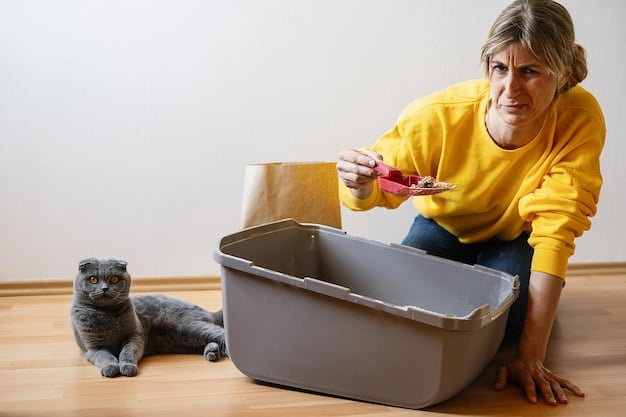
Anúncios
Feline Lower Urinary Tract Disease (FLUTD) is a common condition in cats that affects the bladder and urethra, with prevention strategies including increased water intake, dietary management, and stress reduction, while treatment options range from medication and diet changes to, in severe cases, surgery.
Is your feline friend showing signs of discomfort when using the litter box? Understanding Feline Lower Urinary Tract Disease (FLUTD): Prevention and Treatment Options for Your Cat is crucial for every cat owner to ensure their pet’s health and happiness. This article provides essential information to help you identify, prevent, and treat FLUTD in your beloved companion.
Anúncios
Understanding Feline Lower Urinary Tract Disease (FLUTD)
Feline Lower Urinary Tract Disease (FLUTD) is a complex syndrome that affects the bladder and urethra in cats. It’s not a single disease but rather a collection of conditions that share similar clinical signs. Recognizing the signs and understanding the underlying causes are the first steps in providing your cat with the care they need.
FLUTD can be caused by a variety of factors, ranging from bladder stones and infections to stress and dietary issues. The symptoms can be distressing for both you and your cat and, if left untreated, can lead to serious complications. Let’s explore the different aspects of FLUTD to help you better understand this condition.
Common Causes of FLUTD
Several factors can contribute to the development of FLUTD in cats. Some of the most common causes include:
Anúncios
- Urinary crystals and stones: These can irritate the bladder lining and obstruct the urethra.
- Bacterial infections: Although less common, bacteria can cause inflammation and infection in the urinary tract.
- Stress: Stressful environments or situations can trigger inflammation in the bladder.
Recognizing FLUTD Symptoms
Early detection of FLUTD is essential for effective treatment. Pay attention to the following signs in your cat:
- Straining to urinate: Your cat may spend a long time in the litter box without producing much urine.
- Frequent urination: Your cat may visit the litter box more often than usual.
- Blood in the urine: This is a clear sign that something is wrong with your cat’s urinary tract.
- Urinating outside the litter box: Cats may avoid the litter box if they associate it with pain or discomfort.
Understanding the causes and recognizing the symptoms of FLUTD is crucial for ensuring your cat receives timely and appropriate care. By being vigilant and proactive, you can help your feline friend live a happier, healthier life.
The Role of Diet in FLUTD Prevention
Diet plays a significant role in both the prevention and management of FLUTD in cats. A properly formulated diet can help maintain a healthy urinary tract and reduce the risk of crystal formation. Knowing what to feed your cat can make a big difference in their overall health and well-being.
Hydration is also a key factor. Cats naturally have a low thirst drive, so ensuring they get enough water is essential. A diet that promotes increased water intake can help dilute urine and reduce the concentration of minerals that form crystals.
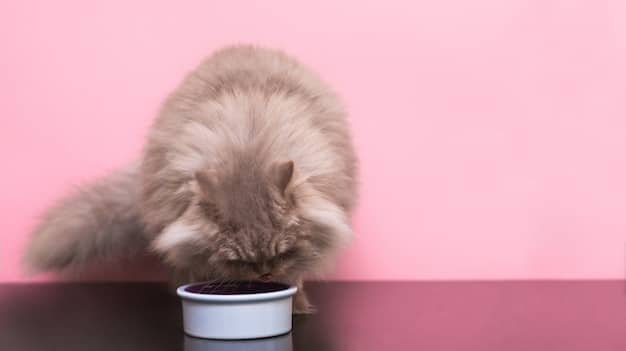
Dry vs. Wet Food
The type of food you choose can impact your cat’s hydration levels. Consider these points when deciding between dry and wet food:
- Wet food: Contains a high percentage of water, which helps increase overall fluid intake.
- Dry food: Can be convenient but may not provide enough moisture, potentially leading to more concentrated urine.
Key Nutrients for Urinary Health
Certain nutrients can support a healthy urinary tract. Look for foods that contain:
- Controlled mineral levels: Reduces the risk of crystal formation.
- Omega-3 fatty acids: Helps reduce inflammation in the urinary tract.
- Added supplements: Some diets include cranberry extract or other supplements known to support urinary health.
Selecting the right diet is a proactive step in preventing FLUTD. Consult with your veterinarian to determine the best dietary approach for your cat, considering their individual needs and health status. A well-balanced, moisture-rich diet can significantly reduce the risk of urinary tract issues.
Increasing Water Intake in Cats
Hydration is a cornerstone of FLUTD prevention. Encouraging your cat to drink more water helps dilute their urine, reducing the concentration of minerals that can lead to crystal and stone formation. However, getting cats to drink enough water can be challenging, so creative strategies are often necessary.
Cats have a naturally low thirst drive, which means they don’t always drink as much water as they need. Understanding this and implementing strategies to increase their water intake can significantly impact their urinary health.
Tips to Encourage Hydration
Try these methods to boost your cat’s water consumption:
- Provide fresh water daily: Cats prefer clean, fresh water. Change the water in their bowl at least once a day.
- Use multiple water sources: Place water bowls in various locations around your home.
- Offer different types of bowls: Some cats prefer ceramic or stainless steel bowls over plastic.
Making Water More Appealing
Enhance the appeal of water with these tricks:
- Try a water fountain: Many cats are attracted to running water.
- Add flavor: Offer low-sodium broth or tuna juice to the water.
- Use ice cubes: Some cats enjoy playing with and licking ice cubes.
Increasing your cat’s water intake can be a game-changer in preventing FLUTD. By making water more accessible and appealing, you can help your feline friend stay hydrated and maintain a healthy urinary tract. Experiment with different techniques to find what works best for your cat.
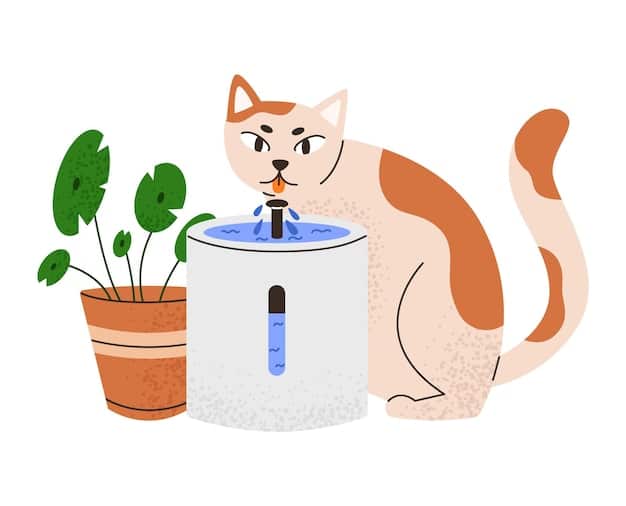
Managing Stress to Prevent FLUTD
Stress can be a significant trigger for FLUTD in cats. When cats are stressed, their bodies release hormones that can cause inflammation in the bladder. Creating a calm and stable environment is essential for preventing stress-related urinary issues.
Understanding the factors that cause stress in cats and taking steps to mitigate them can go a long way in maintaining their urinary health. A stress-free environment contributes not only to their physical well-being but also to their overall happiness.
Identifying Stress Triggers
Be aware of common stressors for cats:
- Changes in routine: Sudden shifts in feeding schedules or playtime can be stressful.
- New pets or people: Introducing new members into the household can cause anxiety.
- Loud noises: Construction, parties, or other loud events can be upsetting.
Creating a Calm Environment
Implement these strategies to reduce stress:
- Provide vertical space: Cats feel safer when they have high places to climb, like cat trees or shelves.
- Offer hiding places: Cats need a secure spot to retreat to when they feel overwhelmed.
- Use pheromone diffusers: Synthetic feline pheromones can help create a calming atmosphere.
By identifying and managing stress triggers, you can help your cat maintain a healthy urinary tract. A calm environment is a proactive approach to FLUTD prevention, contributing to your cat’s overall well-being. Make their surroundings as stable and predictable as possible to minimize stress and promote urinary health.
Medical Treatments for FLUTD
When preventive measures aren’t enough, medical treatments become necessary to address FLUTD. These treatments vary depending on the underlying cause of the condition, ranging from medication and diet changes to more intensive interventions like surgery. Early diagnosis and appropriate treatment are crucial for alleviating symptoms and preventing complications.
It’s important to work closely with your veterinarian to determine the best course of action for your cat. The right treatment plan can provide relief and improve your cat’s quality of life.
Medications for FLUTD
Several medications can help manage FLUTD symptoms:
- Pain relievers: To alleviate discomfort and inflammation.
- Antibiotics: If a bacterial infection is present.
- Anti-anxiety medications: To manage stress-related FLUTD.
Surgical Options
In some cases, surgery may be necessary:
- Perineal Urethrostomy (PU): This procedure creates a wider opening of the urethra to prevent blockages.
- Cystotomy: Removal of bladder stones.
Medical treatments for FLUTD are tailored to the specific needs of each cat, addressing the underlying causes and providing relief from symptoms. Your veterinarian will conduct a thorough examination and recommend the most appropriate treatment plan based on your cat’s condition.
Long-Term Management and Care
Managing FLUTD is often a long-term commitment. Even after the initial symptoms subside, ongoing care is essential to prevent recurrence. This includes maintaining a proper diet, managing stress, and regularly monitoring your cat for any signs of urinary issues. Consistent care and attention can significantly improve your cat’s long-term health and well-being.
A proactive approach to long-term management can help keep FLUTD at bay and ensure your cat enjoys a happy, healthy life. It’s about creating a sustainable routine that supports their urinary health.
Regular Veterinary Check-Ups
Schedule regular visits with your vet to monitor your cat’s condition:
- Routine Examinations: Help detect early signs of FLUTD.
- Urine Analysis: Monitors the presence of crystals, bacteria, or other abnormalities.
Creating a Supportive Home Environment
Maintain a stable and stress-free environment:
- Consistent Routine: Stick to a regular feeding and playtime schedule.
- Safe Spaces: Provide comfortable and secure spots for your cat to retreat to.
Long-term management of FLUTD involves a combination of medical care and supportive home practices. By working closely with your veterinarian and implementing stress-reduction strategies, you can help your cat maintain a healthy urinary tract and enjoy a higher quality of life.
| Key Point | Brief Description |
|---|---|
| 💧 Hydration | Increase water intake with wet food and fresh water sources. |
| 🐾 Diet | Choose urinary-friendly diets with controlled minerals. |
| 🧘 Stress Reduction | Provide a calm environment with safe spaces. |
| 🩺 Regular Check-ups | Schedule routine vet visits for early detection. |
Frequently Asked Questions (FAQs)
▼
FLUTD stands for Feline Lower Urinary Tract Disease, a term encompassing various conditions affecting a cat’s bladder and urethra. It isn’t a single disease but a combination of issues that can cause discomfort and urinary problems.
▼
Preventing FLUTD involves ensuring your cat stays hydrated, feeding them a urinary-friendly diet, and reducing stress in their environment. Regular vet check-ups are also essential for early detection and management.
▼
Symptoms of FLUTD include straining to urinate, frequent urination, blood in the urine, and urinating outside the litter box. If you notice any of these signs, consult your vet promptly.
▼
If left untreated, FLUTD can lead to life-threatening complications, such as urethral blockages, especially in male cats. Prompt diagnosis and treatment are crucial to prevent serious issues.
▼
Yes, stress is a significant trigger for FLUTD in cats. Implementing stress-reduction strategies like providing safe spaces, maintaining a consistent routine, and using pheromone diffusers can help.
Conclusion
Understanding and addressing Feline Lower Urinary Tract Disease (FLUTD): Prevention and Treatment Options for Your Cat is essential for ensuring your feline friend enjoys a long and healthy life. By implementing preventive measures such as promoting hydration, selecting a proper diet, managing stress, and seeking timely veterinary care, you can significantly reduce the risk and impact of FLUTD, ensuring your cat’s well-being and happiness.

